An Interview with Mark Rykken
7June 26, 2019 by Ville Raivio
I am 67 years old and have been in the menswear business for 46 years. I am currently the President and co-owner of Britches Bespoke. We recently opened a showroom at Rockefeller Center at 1270 Avenue of The Americas, Suite 701 NY NY 10020.
Products from Pukimo Raivio
Ralph Lauren, Black Label suit, size 52EU
I attended Montgomery College in Maryland where I majored in Business Administration and minored in Psychology. I also took advanced management courses at Georgetown University as part of a mandatory training program with the company where I started my menswear career, Britches of Georgetown.
I am married and have two boys, Mark Jr., 27, and Michael, 24. I met my wife, who has a degree in Fashion Merchandising from West Virginia Wesleyan Collage, at Britches. I was a Divisional Manager at the time, and she worked as a salesperson in one of my stores. It was only when I was no longer in charge of her store that we started dating, and, of course, ultimately got married. Because our boys grew up with two parents in the men’s clothing business it was practically mandatory, if not expected, to always have them stylishly turned out when we were out at important public or family functions. Of course, much of our influence on their clothing choices ended by the time they entered High School. Kids at that age are mostly influenced by what their peers are wearing and whatever the current clothing trends are for young people at that particular moment in time. To their credit, however, they both carved out their own personal dressing style, in particular my older son who developed somewhat of a reputation as a trend setter in High School. I don’t remember them commenting too much about how I dressed when they were that age, but I do recall the occasional quip “Dad, your clothes look pretty old-fashioned”. I would explain to them that fashion and popular trends are not permanent, that they come and go with the times, but that classic design, be it in clothes or anything else, never goes out of style. I think both of them have come around to embracing that maxim now that they are grown men and have professional careers of their own.
At Britches
Before I get to my parents and siblings and how they reacted to my interest in clothes and personal style of dress back in the early days of my career, I need to give you a little background on what my first real passion in life was before clothes…Music! From an early age, I excelled in art and always had an interest in design. As a kid I loved building things, especially model jets, ships, and cars. I was fascinated with their aerodynamic lines and proportions. My dad was in the US military and retired as a Lieutenant Colonel before entering the private sector as a computer specialist, the training he had received from his 20 plus years in the Army. From the time I was born through age eight we lived overseas, first in Germany and then Japan. When I was turning nine years old we moved back to the States, eventually moving to Chevy Chase, Maryland, due to my father getting stationed at the Pentagon.
All shots feature Britches merchandise
My dad was a major jazz aficionado and stereo buff, so I grew up appreciating high-end audio playback systems, and listening to a lot of Jazz greats like Charlie Parker, Dave Brubeck, and Miles Davis, just to name a few. I also loved listening to my older brother and sisters Rock and Roll 45s. At age twelve I decided I wanted to learn to play the drums. I was mostly self taught, but I did take lessons for a period of time from Charlie Byrd’s drummer. For those that don’t know, Charlie Byrd was a very famous Jazz guitarist. I was good enough to get the attention of an older classmate who played the guitar and was forming a band. So, from the 7th grade in Junior High School through my first two years of college I played in R’n’B and rock bands, performing in venues that held anywhere from several hundred people to as many as 8000 people. One of the bands I was in even performed on TV a couple of times. Music was such an important part of my early life that I was sure I was destined for a career in the music business. However, reality set in at about age twenty when I came to the conclusion that pursuing a life as a professional musician wasn’t the most stable career choice one could make. So, in the summer of my second year in collage I decided to look for a so-called “real job”. At first I wasn’t sure what kind of work I was interested in applying for but then it dawned on me, I liked clothes and at least early on was a pretty good dresser. So I decided I was going to get a job as a salesman in a men’s clothing store.
I interviewed with a lot of the established men’s stores in the Washington DC area at that time, but nothing panned out. But then I remembered this up and coming men’s store “Britches of Georgetown”. My first impression of Britches was that they were a more updated, stylish version of Brooks Brothers. Britches was one of the stores along with Paul Stuart that helped coin the look “updated traditional”. It was a young company, only 3 or 4 years old at the time, and they had just recently opened their first store outside of Washington DC at Montgomery Mall in Maryland. I took a shot by driving out there to see if they were looking for help, and it just so happened that the General Manager of the company happened to be visiting that day. I ended up meeting with him and was hired that same day. This was the summer 1971 and the beginning my 18-year-career with Britches of Georgetown. I worked at Britches through the period of its greatest expansion and rose to Divisional Manager holding complete operational responsibilities for 6 stores and $20 million annual volume in the company’s highest division.
With colleague
I think what most impressed my parents and siblings back then, was seeing how easy it was for me to transition into the menswear business without any real experience or training. The fact is I never really lost my interest in clothes, which began in earnest when I entered Junior high school in 1963. This was still a time in our culture when dress codes were adhered to, and being properly dressed was still a huge part of our society. As such, my first two years of Junior high school were essentially a contest with my friends and classmates to see who could out dress who. Men’s fashion in the early ’60s was still the Ivy League look and so, quite naturally, that was the style of dress that would serve to inform me and my classmates. A typical school outfit would be a pair of Corbin khaki pants with a striped surcingle belt, a Gant or Eagle button-down oxford shirt, a Shetland crew neck or Lambswool V-neck sweater, Bass Weejun penny loafers, Adler Shetland wool socks, and a Peters Sportswear Jacket. Peters jackets came in a half dozen colors so the goal was to see who could own the most jackets.
My favorite men’s stores had names like The Georgetown University Shop, Leon Sherman, The Cambridge Shop, and, of course, the patriarch of them all, Brooks Brothers. I would spend a lot of time in these stores studying the merchandise and chatting about clothes with the sales staff, managers, and, in some cases, the owners. However, this sartorial game of one-up-manship with my classmates would end in a couple of years with the emergence of the counter culture movement. Hippie clothing boutiques were starting to pop up everywhere, and so it wasn’t long before my band mates and I disbanded our Ivy League togs for a wardrobe of bell bottom jeans, tie-dyed tee shirts, and Converse All Star Low Top Sneakers. This was also the period of time that ushered in the so-called Peacock Revolution in menswear. It was in 1968 when Ralph Lauren would burst into the menswear industry with the introduction of the wide tie and Pierre Cardin would rule the tailored clothing business with his close-fitting, wide lapel, and hour glass-shape silhouetted suits and blazers.
My family also had a great deal to do with shaping my sense of style and taste as I was growing up. My parents were great dressers, especially my mother who not only had great taste in clothes and dressed with a lot of style, she was also a very talented interior designer. My older brother and sister had good taste in clothes as well, so I grew up I having some pretty good exemplars around me to observe and learn from.
In terms of other hobbies and passions of mine, I’ve already spoken at length about my love of music, which, when my playing days were over, I channeled into becoming an avid audiophile. Recently I purchased a new high-end turntable as I am getting back into listening to vinyl records. A really good turntable with tube amplification still reproduces better sound than any modern day digital playback system. It gives the music a warmer and more realistic presentation sounding closer to live music. My other great passion in life is golf. I got bit by the golfing bug at 15 years old when I worked as a caddie one summer at a local country club and I haven’t stopped playing since. In my opinion it’s the greatest game ever invented. I also love reading books and traveling. It’s all about the desire to never stop learning, and to have the experience of visiting places one has never been to before.
My interest in clothes may have started in Junior High School but my real education and passion for the apparel arts really began when I started my career with Britches of Georgetown. It was a combination of on the job training and my desire to learn everything I could about the men’s clothing industry. I read as many books as I could get my hands on about men’s clothing, from how to dress, the history of men’s fashion, to the business side of the industry. Perhaps the book that had the greatest influence on shaping my own personal sense of style came out in 1973, “Esquire’s Encyclopedia of 20th Century Men’s Fashions”. This was the book where I was first exposed to the great menswear illustrations of the 1930s and ’40s from artists like Laurence Fellows whose works regularly appeared in the industry publication Apparel Arts and its commercial cousin Esquire magazine. We had a couple of copies laying around in the store, and when I had the chance I would spend as much time as I could reading the book and studying the sartorially exquisite illustrations. I knew then it would be the elegant men’s fashions of the 1930s that would form the foundation of my own style of dress. Not only was the 1930s the “Golden Age of Menswear” it was also the decade when the modern male suit fully evolved from a design standpoint. The suit design I’m referring to is the English Drape Cut. The Drape cut was originally invented by in the late 1900s by a man named Frederick Scholte, the then Prince of Wales’s (later know as the Duke of Windsor) personal tailor from 1919 to 1949. It would take nearly 10 years before the drape cut would make its way across the pond to the United States and go on to become the most dominate suit design of 1930s. And so it would be the Duke of Windsor along with Hollywood’s A-list male movie stars of the decade, all of who wore the drape cut in one form or another, that would go on to influence male dress for the next several decades.
Rather than trying to describe my own dress it might be more informative to share with you my personal philosophy about clothes and style. I believe one of the major roles that clothes should play is that they should flatter the person wearing them, in particular tailored suits and jackets. This starts with understanding proportion and scale as it relates to one’s individual architecture, and secondly what colors will look best on them based on their skin, eyes, and hair color. Once this is understood they’ve at least begun to form a foundation on which they can then build a wardrobe for the long haul. Only then can someone start to develop their own personal style and dress. There are other fundamentals of proper dress one should learn to master as well, such as learning how to tie a four-in-hand knot, knowing what collar design will best compliment the shape of one’s face, how to fold a pocket square correctly, just to name a few. The person who truly dresses with style makes what they wear appear effortless, flattering, and comfortable. Think of Fred Astaire whose style of dress was described as relaxed elegance, and whose aesthetic was both simultaneously timeless and stylishly fashion forward. He did this by always wearing something unexpected like using a silk necktie for a belt, which became a signature look for him. Someone can carve out their own signature look by wearing something that people will eventually come to expect them to always wear. It could be a whimsical pocket square, accessory, or some interesting piece of jewelry like a unique wrist bracelet. I will finish by emphasizing once again that unless one learns to master the fundamentals first, they will never learn how to build a lasting personal style of dress.
With A. Churchwell
What inspires me is good design in everything, be it with clothes, cars, buildings, furniture, golf clubs, etc. I believe that good design should have both function and form, and that form should always follow function. I’m inspired by people who have reached the very top of their profession, and in particular those individuals whose achievements have elevated them to the best of all time conversation in their field of work. People who have made the very most of their gifts and innate talent and not wasted them. Names like Michael Jordan, Steve Jobs, Albert Einstein, Ralph Lauren, Tiger Woods are just a few examples.
The definition of style for me, be it a person, place, or thing, can be answered by asking one question, has he, she, or it, withstood the test of time? Style can be in the design of a product, the way someone carries himself, the enduring allure of a city, the way someone dresses, or even a style of play in the sports arena. Ask yourself the following, why has the modern male suit still survived over a century now, why do we desire to visit places like Paris, France, or the Amalfi Coast in Italy, why do we still look to the great taste makers and dressers of the last century like Fred Astaire and Coco Channel, etc, with such reverence? The answer is that enduring style transcends the times and generations.
In 1989, I left Britches and opened the Alan Flusser Custom Shop in Washington, DC, which I owned through a licensing agreement with Flusser. I first met Alan in 1980 when I was the manager of our flagship store in Georgetown. His first menswear collection had just launched simultaneously with the release of his first book “Making The Man” and we were the only menswear store in Washington to carry his line. Alan was in the store for a book signing and to promote his collection which had this 1930s Savile Row-inspired aesthetic. Alan’s collection was so in line with my personal taste and sensibility that I became the company’s biggest promoter of tailored clothes and accessories. Alan and I became good friends and, of course, eventually became business associates with the opening of the Washington, DC, Alan Flusser Custom Shop.
Due to a local economic downturn I closed the shop in 1994, and in September of that year I joined the prestigious and international clothier Paul Stuart to open and manage its first U.S. retail location outside of New York City. The store opened to the public in March 1995 and occupied 27,000 square feet at the base of the John Hancock Center on North Michigan Avenue, Chicago, IL. I had over 65 employees and held all merchandising, operational, and administrative responsibilities reporting directly to Clifford Grodd, President and Co-owner of Paul Stuart Inc.
In 1997 I left Paul Stuart to re-associate with Alan Flusser, heading up his Custom operation inside of Saks Fifth Avenue , NYC. I held complete operational, administrative, and merchandising responsibilities for the shop, reporting directly to the President of Store Operations. I grew the sales volume from 1.1 mil when I took over to 2.8 mil in 2 1/2 years.
In 2002, I formed Alan Flusser Custom Shop, LLC, secured a license from Alan Flusser and opened the free-standing shop on East 48th Street, NYC. I ran day to day operations, overseeing every aspect of the business. Along with Alan I was involved in product design as well as all buying and merchandising responsibilities. In 2010, Alan and I parted ways due to the financial crash in the fall of 2008.
In October of 2010, I re-joined Paul Stuart as the Director of Custom Clothing New York, Washington DC, and the Chicago stores. I was hired to oversee and grow the company’s fledgling made-to-measure clothing and shirt business. In the fall of 2011, I introduced Paul Stuart Custom, a true hand made bespoke garment. The house style was based on my proprietary pattern, an updated version of the English Drape Cut, which I had developed before joining Paul Stuart. As a result, I had exclusive rights to the pattern but agreed to use it for Paul Stuart Custom. I grew the overall, custom and made-to-measure clothing and shirt business from 1.2 mil to 3 mil in 4 years.
With T. Mastronardi
I left Paul Stuart in October of 2017 to launch Britches Bespoke with Rick Hindin, my former mentor and Co-Founder of Britches of Georgetown. It would be an understatement to say that my menswear career has literally come full circle. It was through a serendipitous encounter with Rick a couple of years earlier that he shared with me his plans to re-launch the Britches brand back into the marketplace. This was incredibly exciting news and all I knew is that I wanted to be involved. Being partnered with Rick Hindin to bring back one of the most beloved and well respected menswear brands back to the marketplace has literally been a dream come true for me. So, after months of planning, organizing, and designing, we officially launched Britches Bespoke in June of 2018 initially through a series of trunk shows alternating between New York City and Washington, DC. Rick and I have larger plans for expanding the Britches brand, but the first phase was the launch of Britches Bespoke. We feel that by introducing Britches back into the market at its highest taste level and quality will create a halo effect over everything else we have in store for the brand down the road. After four very successful trunk shows we opened a permanent showroom in October 2018 in Rockefeller Center.
Before I get into specifically what makes Britches Bespoke different than other tailors and tailoring establishments in New York, I’d like to share with you some of the core values and principles that made Britches of Georgetown so successful and special. I bring it up because, although it’s not an apple to apple comparison, Rick and I are bringing back as well as expanding on many of the same core strategies and disciplines that defined Britches of Georgetown to Britches Bespoke. From its inception Britches positioned itself in the market with its logo, stating “Britches of Georgetown, Fine Clothiers Since 1967”, therefore sending the message from the get go that it wanted to be known for selling “Fine” men’s apparel. And then, secondly, Britches separated itself from other men’s stores when they introduced the iconic slogan “Clothing for Life”, meaning we clothe the well dressed man for all areas of his life, be it formal wear, business wear, or weekend sportswear. Britches wasn’t just about selling men’s clothes, it was selling a lifestyle, and this was conveyed in all of its marketing.
As an aside; in the early days before Ralph Lauren had stores and became the global fashion behemoth and taste maker that he is today, Britches was Ralph’s 3rd largest account. When Ralph Lauren’s business took off and he started opening stores, his marketing was all about selling a dream and a lifestyle, all of which in part he modeled after Britches who was doing it first. The clothes and our look could be defined as updated traditional, fashion forward and stylish yet still timeless in design. I might add that Britches was primarily private label, meaning we sourced the piece goods, designed and manufactured to our specifications 85% of our products. Whether it be formal wear, business, or weekend attire, it was clothing for life designed and made for the long haul. The goal was to design tasty high quality products and offer them at a reasonable prices. This, along with providing legendary service and having the most highly-trained and knowledgeable employees in the industry, was the formula that propelled Britches at its peak in doing 110 mil in sales volume with four divisions and 110 stores.
The biggest difference between Britches Bespoke and other custom tailors is that we create clothing for all aspects of a gentleman’s wardrobe and lifestyle, including Custom clothing and shirts for formal and business wear, Custom Unconstructed Jackets, Custom Outerwear, Custom Shoes, Custom belts, Custom exciting Ties, Custom Sportswear, in addition to Cashmere and Alpaca Sweaters, Scarves, Luggage, Sterling Silver Cuff Links and Formal Sets, Pocket Squares, Hosiery, Jeans, Pima Cotton Dress T-Shirts and more. Our key marketing message is that it’s “A Whole New Way To Think About Custom Clothing”, and like Britches of Georgetown of old we are creating “Clothing for Life”, or “Custom Clothing for Life”, if you will, for the well dressed gentleman. You’ve asked me to describe our “House Style” which I touched on earlier, but will reiterate again. The pedigree and DNA comes from the English Drape, the most dominate suit design of the 1930’s, invented by Frederick Scholte, popularized by Anderson and Sheppard, and, with the exception of those bespoke aficionados who had been having their suits made in London for years, it was reintroduced to the American menswear market in the early ’80s by Alan Flusser.
Of course, my history with Alan Flusser is well documented, therefore my taste and philosophy towards men’s clothing is very much in line with Flusser’s. So perhaps a simpler way to say it is my “House Style” is in the lineage of Scholte’s, Anderson and Sheppard’s, and Alan Flusser’s. The key differences is that I’ve slightly reduced the shoulder point to point, reduced the fullness or drape in the chest, raised the gorge and button stance, and added a two piece-front which makes it easier to reduce any excess fullness in the front and hip area. The construction is soft, using very little padding, and I’ve raised the back collar height to give the shoulder a more natural sloping line. I believe that the most flattering suit design follows the natural lines of the human body.
So the Britches Bespoke “House Style” still has all of the benefits of the classic Drape Cut, meaning it gives the wearer the appearance of having broad shoulders, a full masculine chest, a small waist and narrow hips, but with a trimmer body fit that doesn’t sacrifice comfort. I will finish by saying that, in my experience, I haven’t ever found a suit design that will flatter most men’s body types better than the English Drape, or a version of it. As far the cloth selection, I am very much a traditionalist where that’s concerned. I know for years the trend has been in the direction of lighter and lighter weight fabrications. That’s fine for warmer weather but not in January when its 20 degrees (F) or colder outside. It’s fine to have a couple of so-called year round weight suits or jackets for those in between seasons or for travel, but I recommend to my clients to build a proper wardrobe for all four seasons. That means flannels, heavier weight worsteds, and tweeds, for the Fall and Winter, and lighter weight wool’s, linens, and cottons for the Spring and Summer.
I think another thing that distinguishes us from perhaps not all, but most other custom tailoring establishments, is that we do more than just make clothes for men, we also teach men how to dress. I touched on this earlier about the importance of learning the fundamentals of proper dress so I may be repeating myself a little bit here. This starts with educating the client on what looks best on him and why. This involves teaching him basically two things, especially with tailored clothing, what are the correct proportions and colors that will most flatter him based on his individual body type as well as his skin, hair, and eye color. I also explain things such as what collar design would best frame and complement his face. An example would be that a gentleman with a narrow face will look better in a spread collar because it will help to off set the narrowness of his face, as a less spread collar would help to off set the roundness for someone who has wide or full face. Most men have never received this kind of information when buying their clothes custom made not, yet I know through experience that men are very receptive to hearing about these principles especially once they see what a positive difference it make in their appearance.
To answer your last question, why should Keikari readers try out Britches Bespoke? Well, I’d like to think I’ve made a pretty compelling argument for that already. That said, I would like to personally invite any readers to visit our showroom in New York where I will give them one hour’s consultation on the house. They can make their appointment by emailing me personally at mrykkenATbritchesbespokeDOTcom.
Category American style, Interviews, Quality Stores, Tradesmen | Tags:

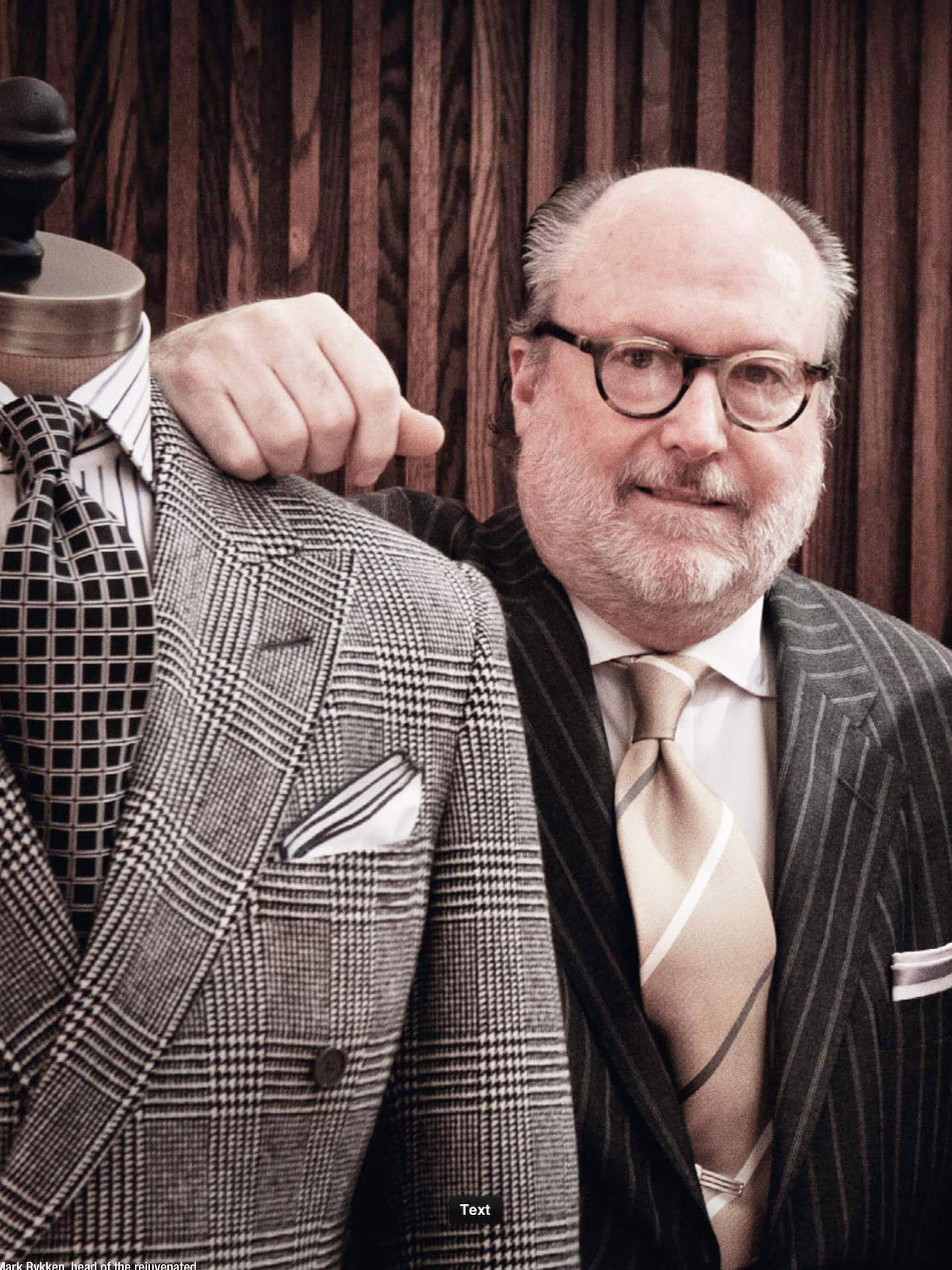
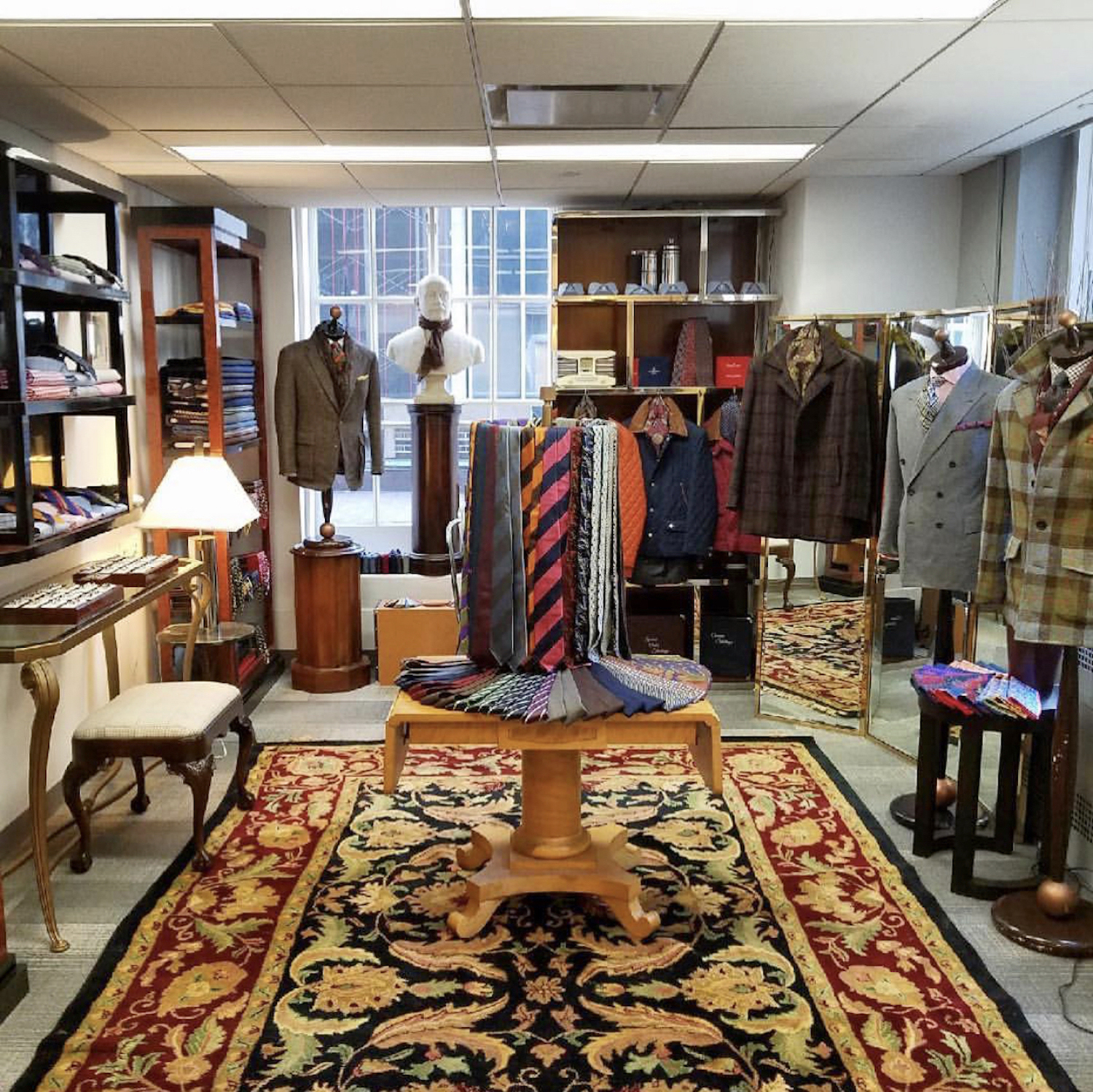
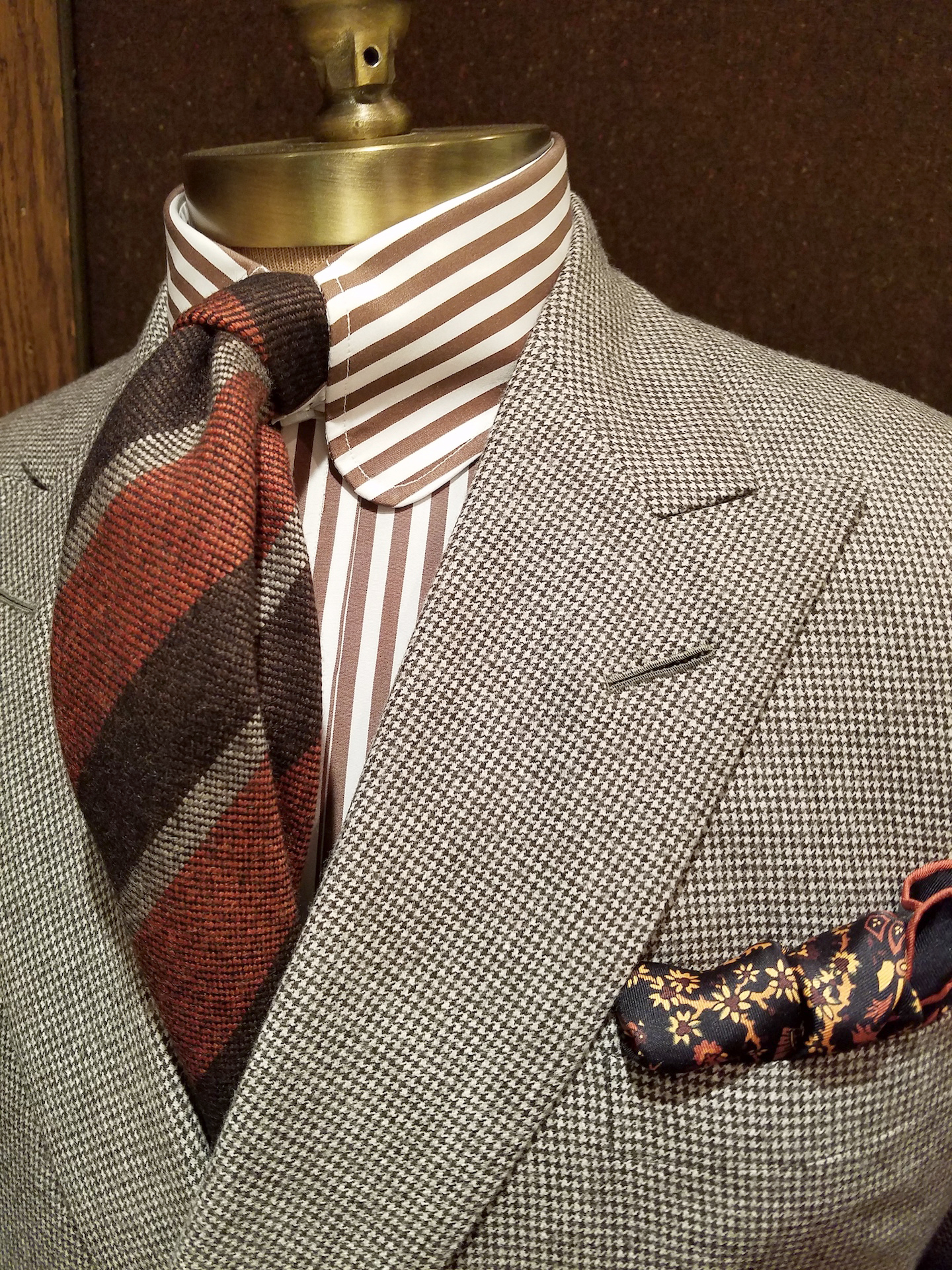

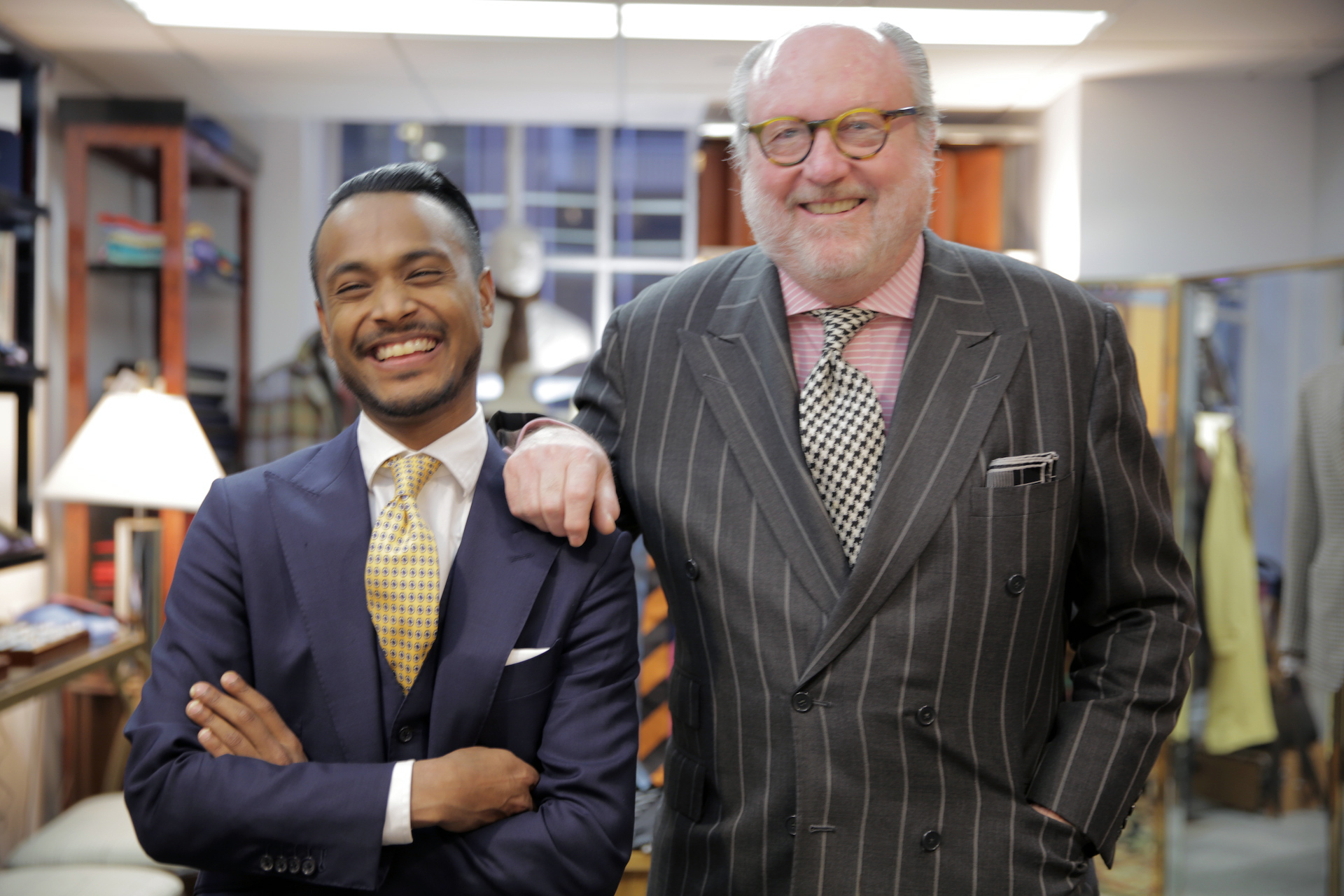
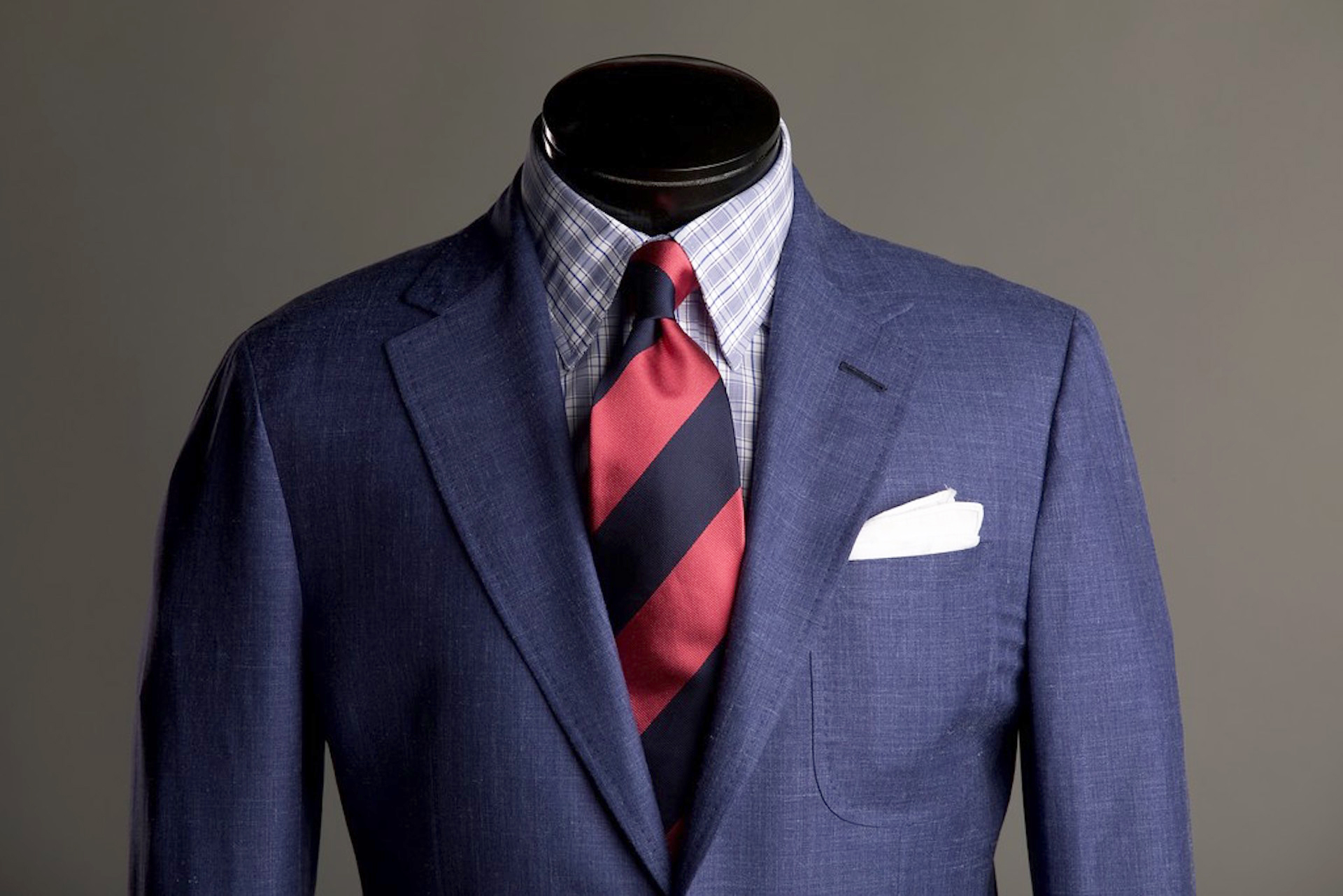

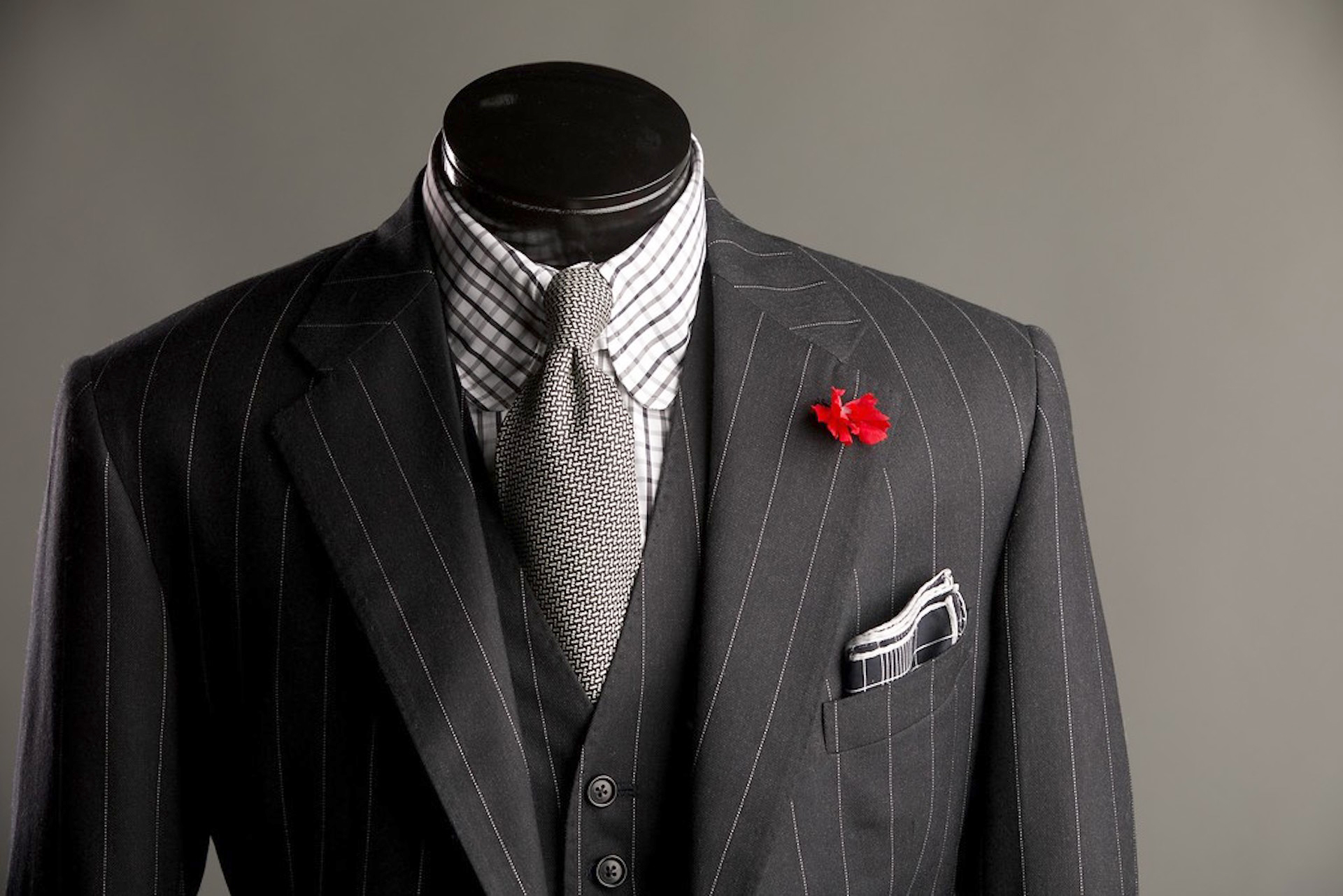
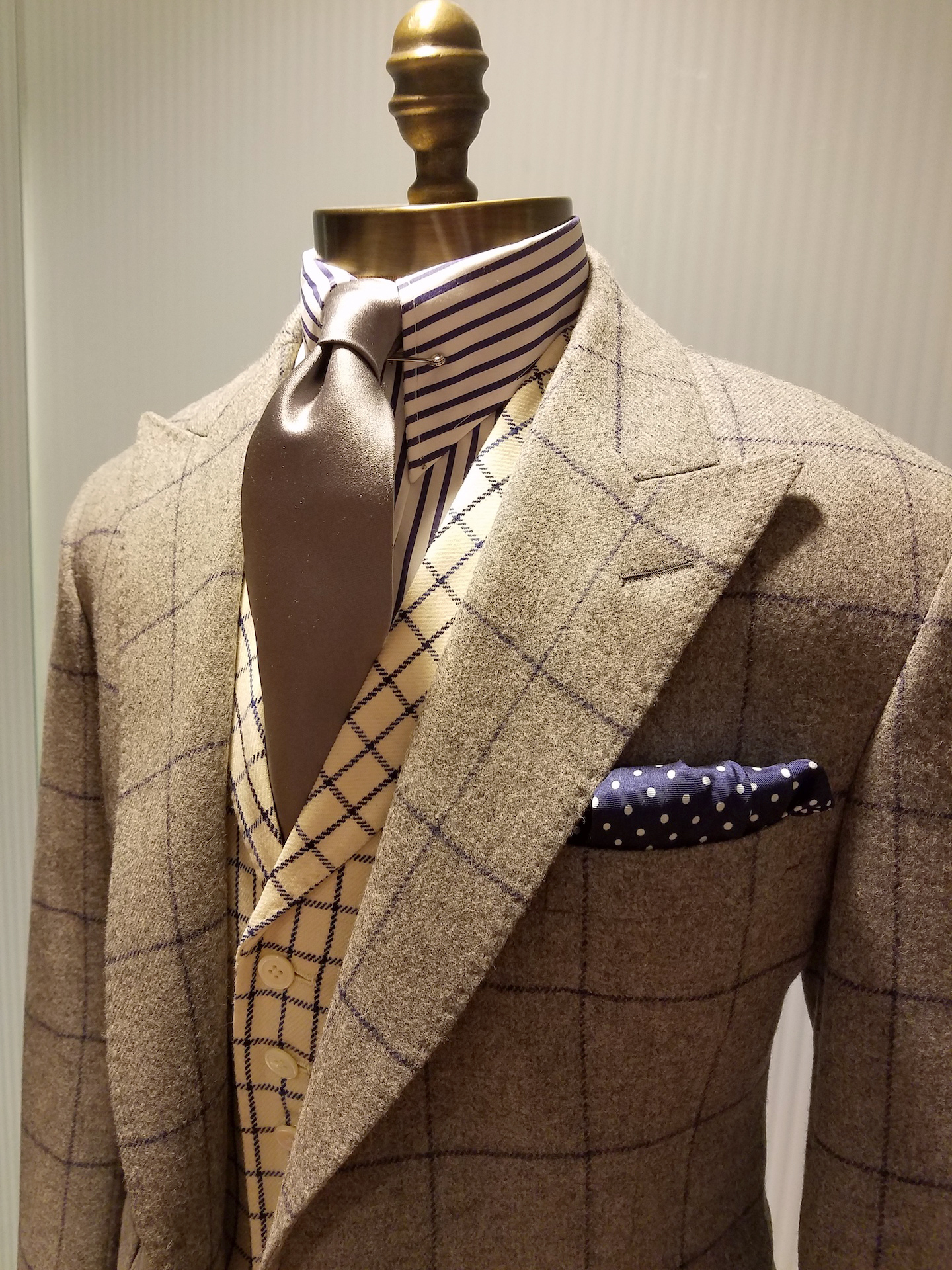
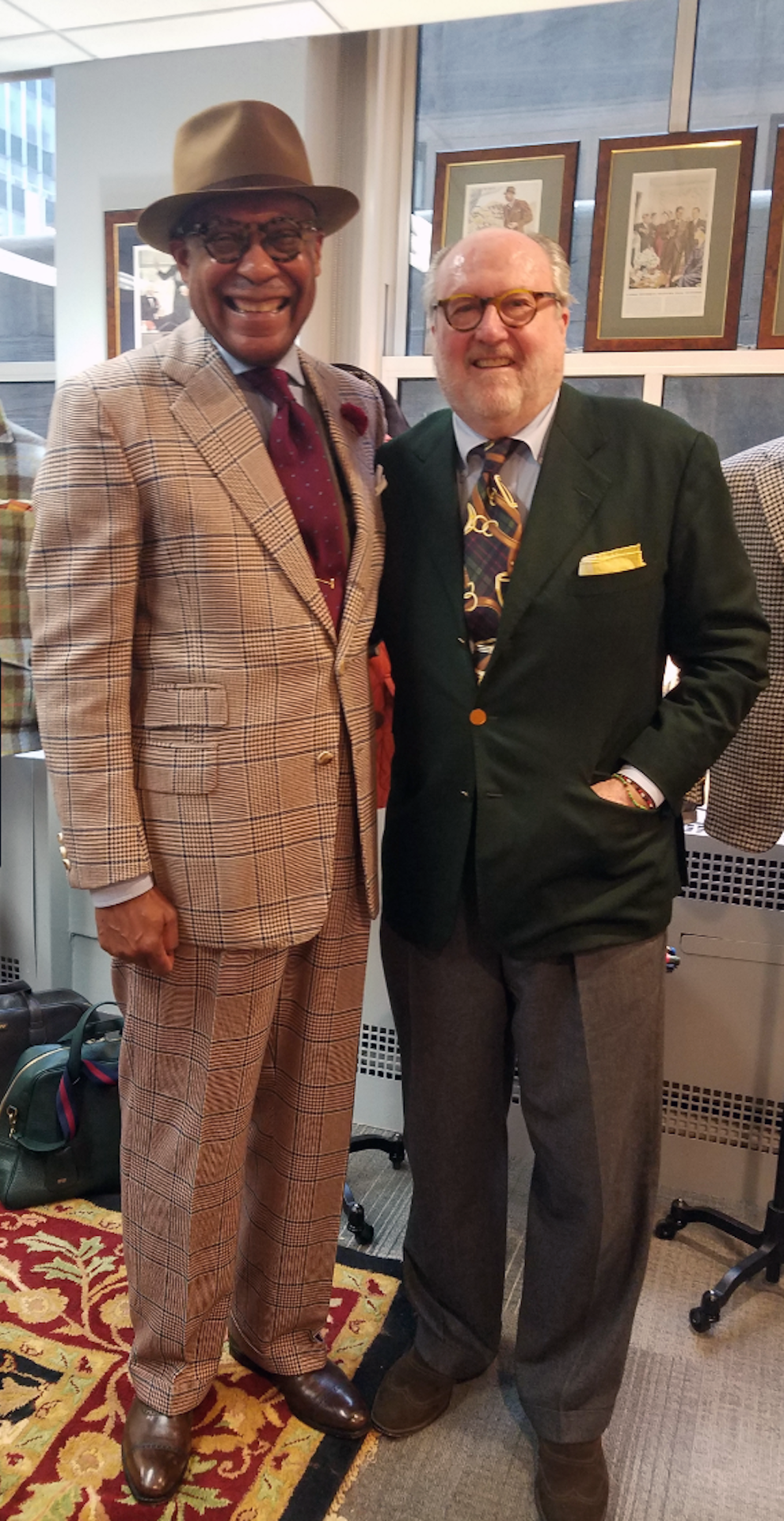
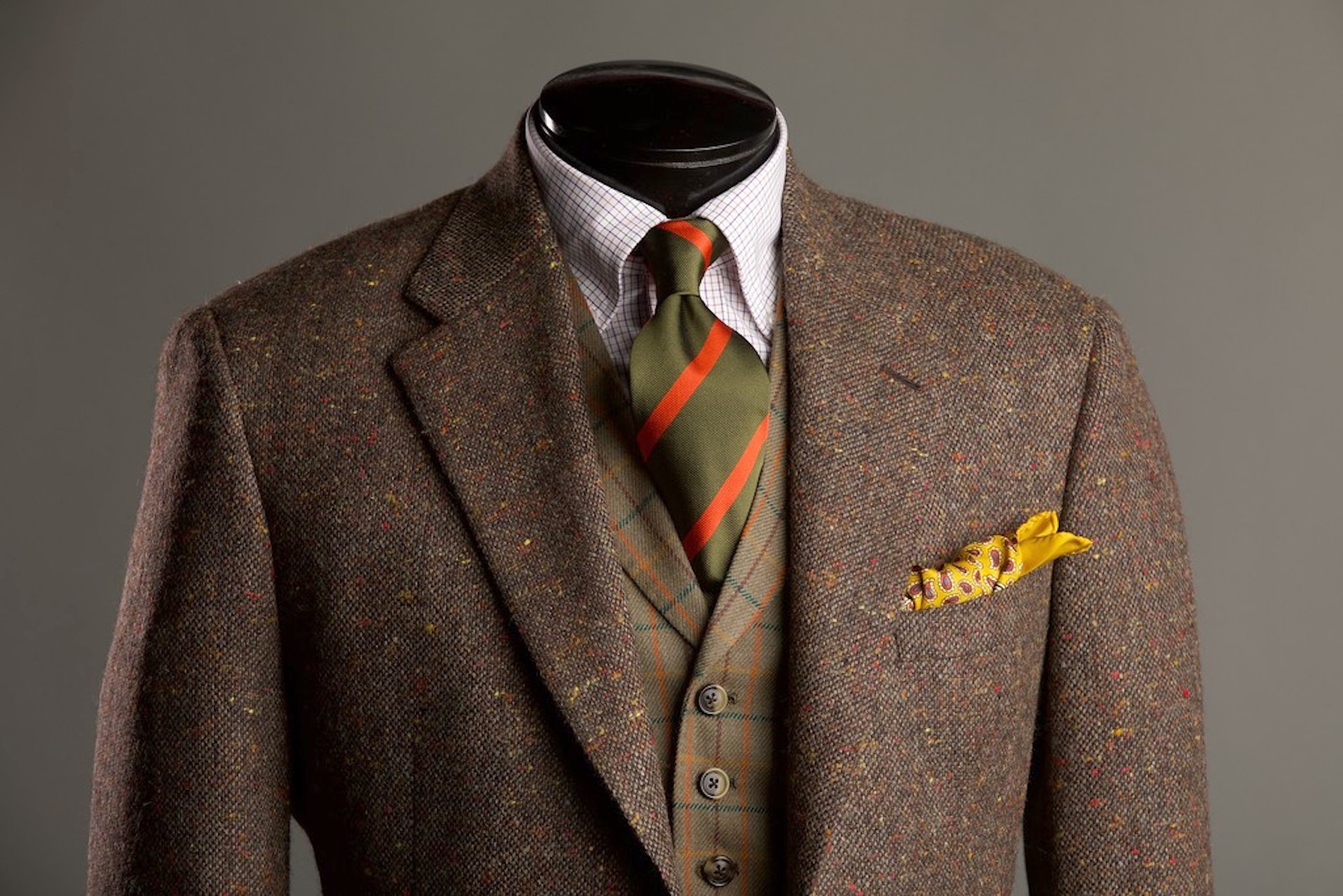
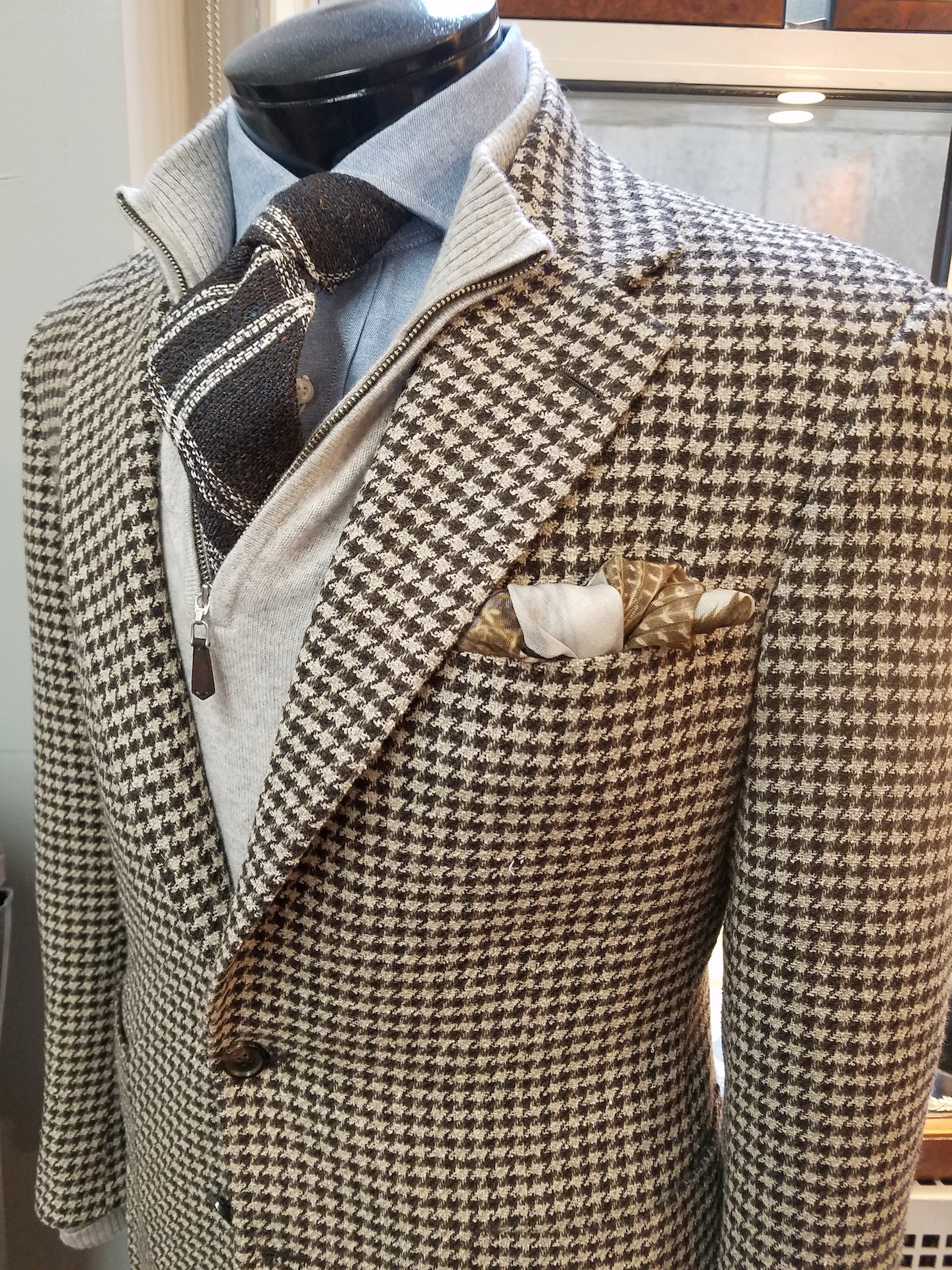
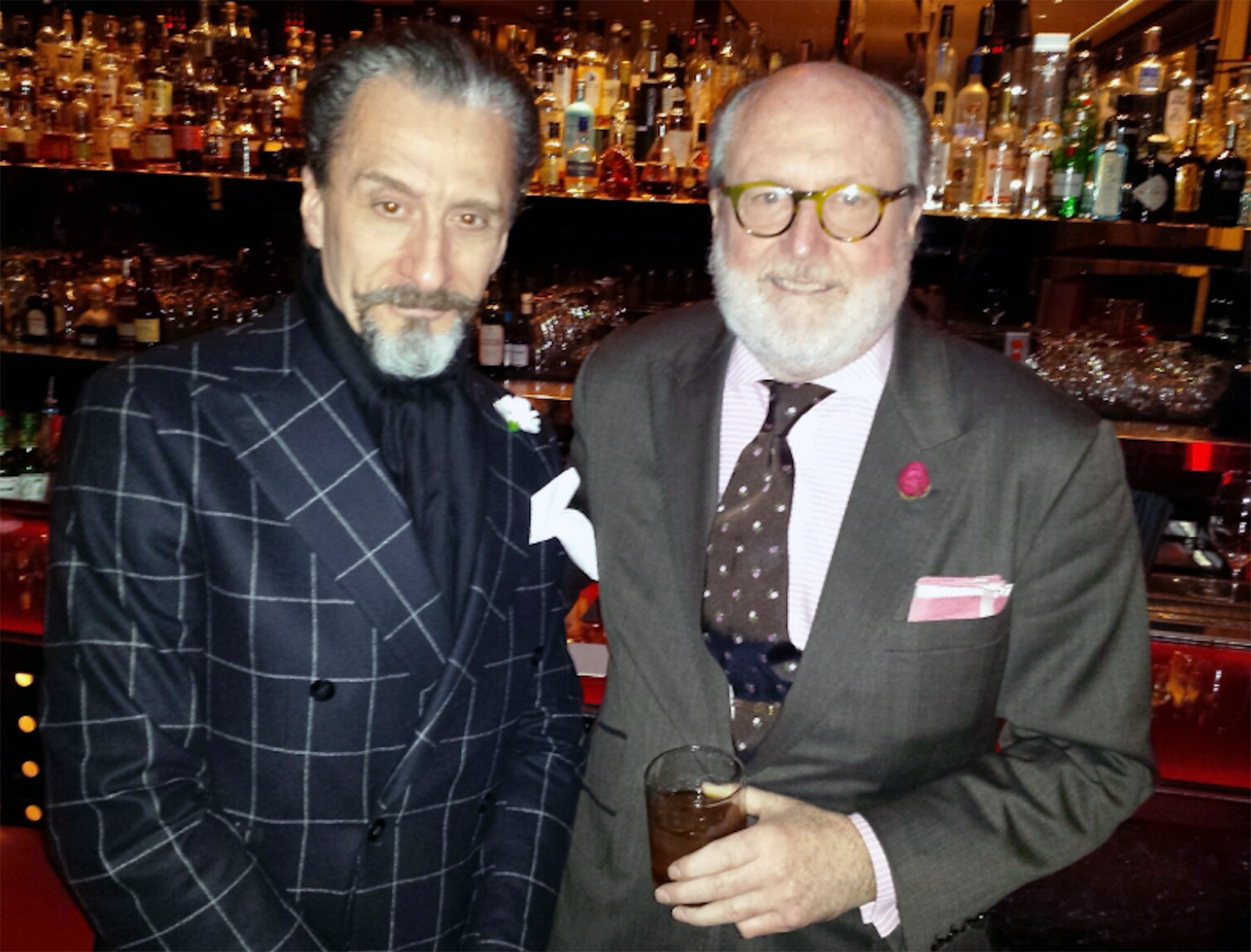
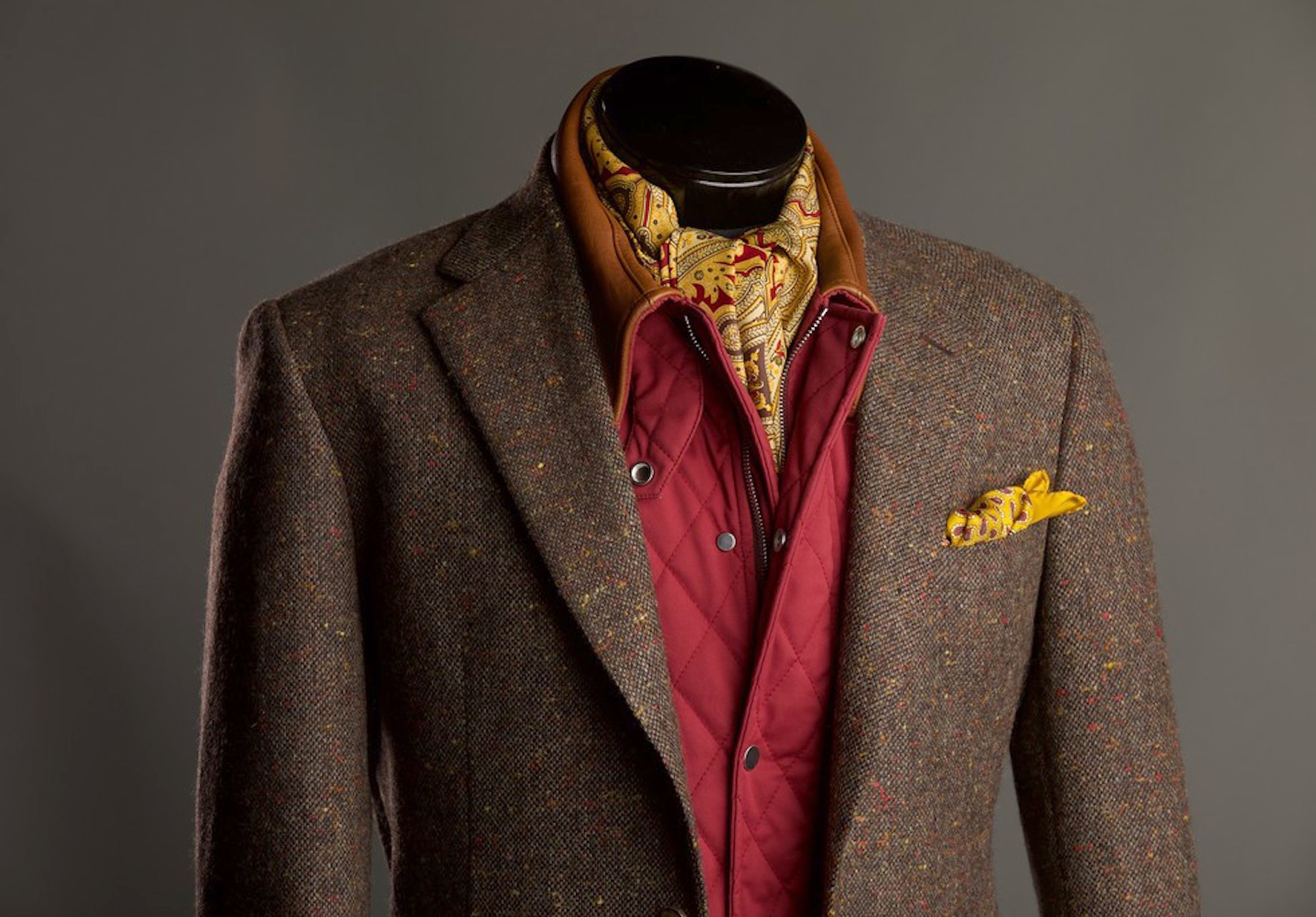
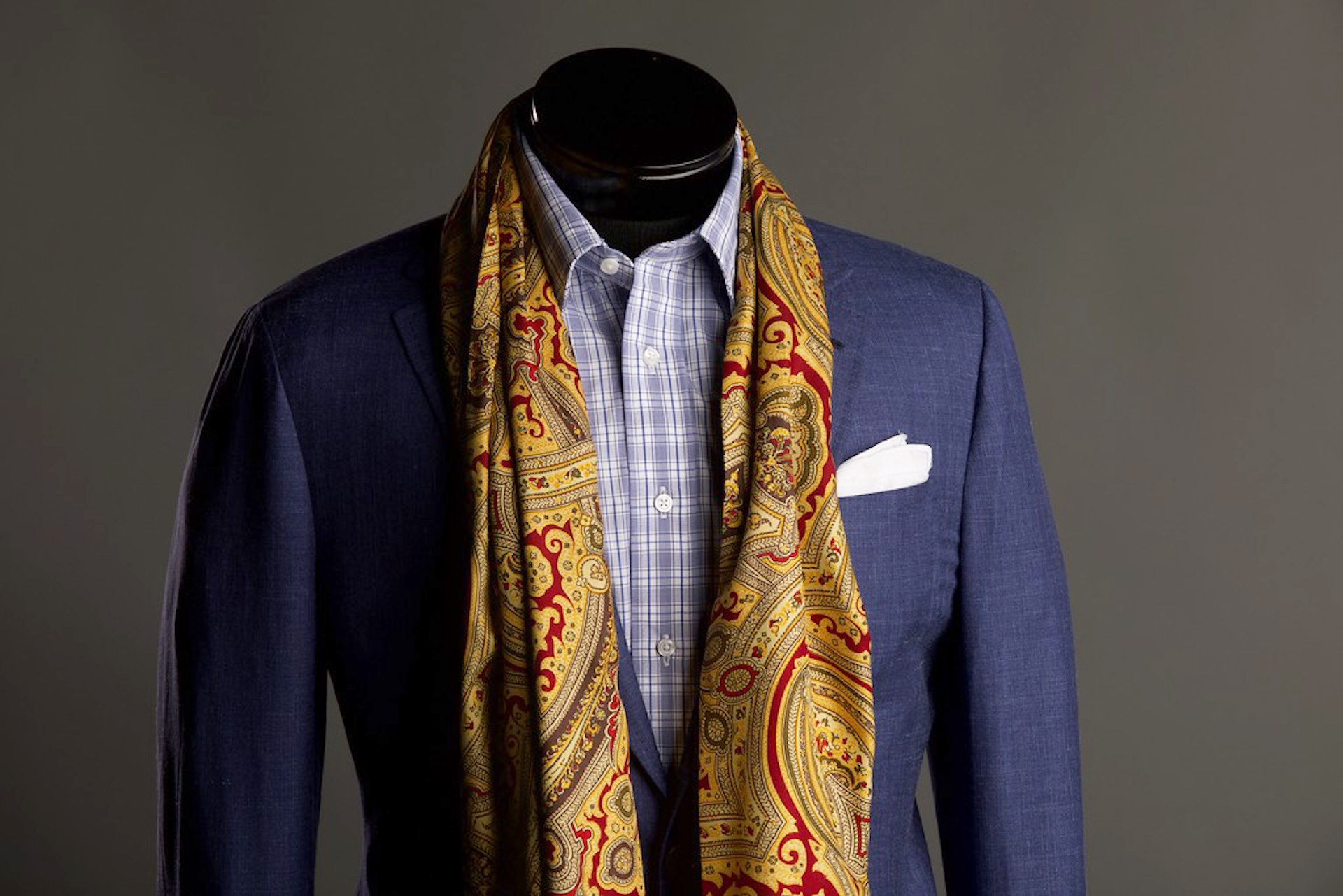
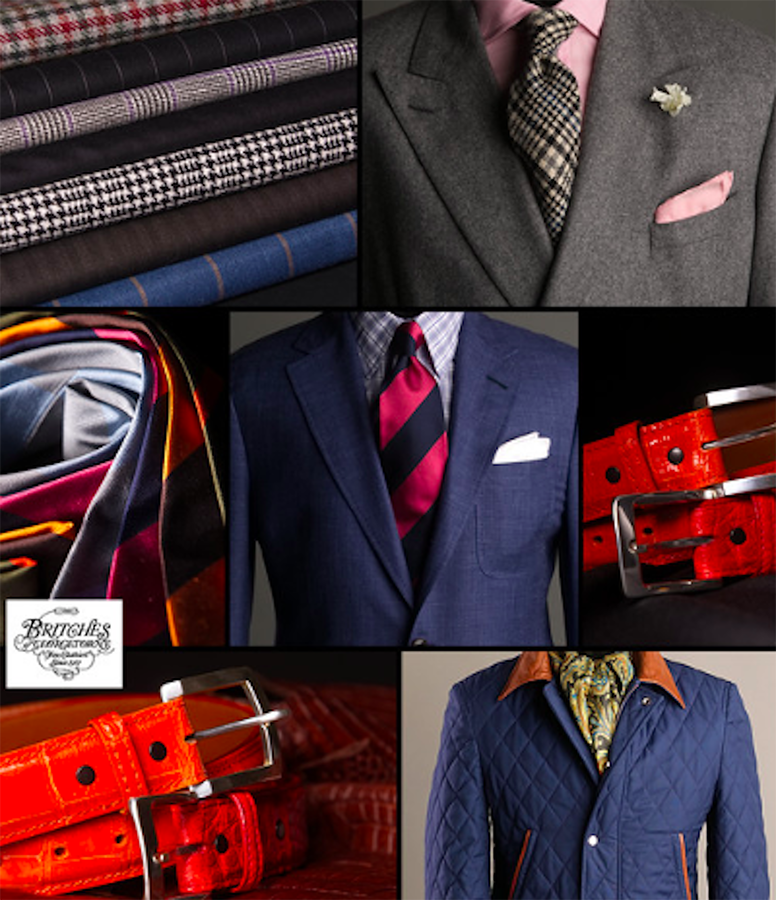



Good evening mark,Im so happy to see you seeking you highest passion.it was waiting for you. Calvin Ruffin,living in the Dominican republic
Love and success.
As a Georgetown student in the early 1990s, I loved Britches of Georgetown and look forward to visiting the NY shop someday.
Great story and I loved the way you continued to re- invent yourself and excel in every step of your journey
Dear Peter,
Thank you for your kind words. I appreciate it very much.
All the best,
Mark R.
Thank you Frank. It’s good to hear from you. Hope your doing well! My best, Mark
Great interview with great photos.I was in Beverly Hills for over 40 years.Carroll & Co.Eric Ross.Giorgio.Sulka., and Stefano Ricci.The stores we admired =Britches,Paul Stuart, and Louis of Boston. I love your style Mark.
Great story Mark, many things I didn’t know about you and very impressive. Best wishes for your continued success!
Cheers,
Frank